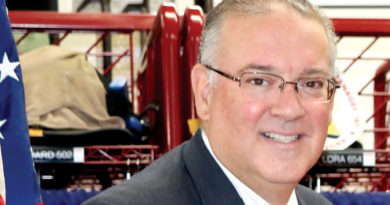Thank you Amazon, You Put the Spotlight on LIC
BY DR. JACK EICHENBAUM, QUEENS BOROUGH HISTORIAN
During my undergraduate years (1959-1963) as a chemical engineering student at Cooper Union, I passed under and over Long Island City on the 7 train commuting to classes. It was not until my senior year that I actually visited LIC.
In a class called “Plant Trips,” we went to the National Sugar Co. (Jack Frost brand) refinery on the East River shoreline. It was an aging factory built in the 1890s. We saw tarantulas crawling in the raw sugar dumped in an adjacent shed. In the factory, many were nauseated by the overpowering sweet odor generated in the refining process.
I left New York City in 1963 after graduation. I returned to the city again in 1976 after acquiring a Ph.D. in urban geography. The city was at a low point in it history, hemorrhaging industrial and office jobs, high-crime rates, and decaying public education and transportation.
I looked at the city through different lenses. Much of Manhattan suffered from ecological problems and high living costs. The new energy of the city in the form entrepreneurial immigrants was already established in Queens and Brooklyn, and the artists were beginning to move across the East River.
Lost in the discussions, speeches, and protests generated when Amazon expressed interest in establishing a stake in LIC has been the important historical context.
While some are concerned about the financial incentives and others are worried about infrastructure, access to jobs and unionization, we would be wise to bear in mind that the arrival of major new employers in Western Queens could be a positive step towards returning Long Island City to its long-held status as a bustling hub for jobs.
In the early 19th century, industrial activity in NYC was confined to the South Street Seaport area of lower Manhattan. After frequent fires forced legislation to build buildings more expensively out of brick or stone, industry moved across the East River to Brooklyn, which had the advantage of the Long Island Rail Road terminating at the waterfront at Atlantic Avenue.
But by mid-century, the growing city of Brooklyn forced the railroad back to its current Flatbush Avenue terminal. By 1854, investors built a rail connection from Flushing to the Queens waterfront in the area we now call Long Island City.
This proved to be an advantageous and unchallenged area for industrial transshipment, and the Long Island Rail Road soon built a competitive line from Jamaica to the same waterfront.
In 1870, before Queens became a part of New York City, a consortium of railroad and industrial magnates came together to incorporate a new municipality. The communities of Hunter’s Point, Astoria, Dutch Kills, Blissville, Ravenswood and Sunnyside merged to become an independent Long Island City, separating from the town of Newtown.
Nearly 30 years later, the area bustled with factories and jobs. One of the leaders of this effort was the industrialist Henry S. Anable, for whom Anable Basin—the inlet on the waterfront and the proposed location of Amazon’s northeast headquarters—is named.
But LIC was poorly managed and in debt. Consolidation into Greater NYC in 1898 erased that debt, but ended self-determination for the municipality.
Long Island City of the late 1800s through the 1950s was a busy hive of activity, the industrial heart of the metropolis. Factories produced staplers, pasta and chewing gum. Oil and sugar refineries dotted the shoreline. Freight and passenger rail brought goods and people by the carload.
Through a series of enormous public works projects, including the excavation of Sunnyside Yard by the Pennsylvania Railroad, the area was converted from swamps and wetlands into a sculpted landscape of industry.
Tens of thousands of workers—many of them immigrants—went to work daily in this bustling jobs mecca. Workforce housing at Queensbridge, Sunnyside, Astoria and beyond housed these workers, and their jobs were a walk or quick transit ride away.
Beginning in the 1960s and accelerating through the 1980s, Long Island City’s industrial landscape shifted, as many jobs went to lower-cost environments out of state and overseas. The population of the entire borough contracted, and the working class struggled mightily.
Long Island City became known for crime, prostitution, and abandoned buildings. A dedicated group of artists and creatives, many of whom still live and/or work in LIC and are devoted to its growth, adopted some of the retired factories, and many businesses survived and endured.
Beginning in the late 1980s and until the present, New York City attempted to bring commercial space to Long Island City in an effort to replace jobs lost from the industrial era with the jobs of the new economy.
Despite Long Island City’s exceptional transit access and proximity to Manhattan, these efforts were largely unsuccessful. The Citi Tower stood alone for many years, and the 2001 LIC rezoning failed to induce any new commercial development.
Instead, New York City’s insatiable housing market resulted in thousands of new units of housing for the upper-middle class in gleaming towers that sprouted along the waterfront and throughout the area wherever rezoning permitted.
But now, given the spotlight shone by the proposed Amazon deal, we are arguably at the precipice of a new era for Long Island City. Amazon recognized the potential of LIC to absorb thousands of new high-tech jobs at Anable Basin.
That potential will now be recognized by other high-tech and creative firms. A well-designed campus at Anable Basin can build upon the recent successes of reclamation and remediation of the entire Long Island City waterfront for public use, a process that started with the Queens West development in the 1980s and continues with Hunters Point South today.
People raised legitimate concerns about the Amazon project, and our leaders must be held to account that any promotion of LIC is advanced with a consideration for the infrastructure needs of the local neighborhood—particularly its creative community—and concerted steps are taken to provide local Queens residents with access to new jobs.
In New York City, the story of our neighborhoods is one of constant evolution and multiple chapters. The next chapter in Long Island City will be about its reemergence within New York City and around the world as a place that drives innovation and employs New Yorkers.
Thank you Amazon for considering LIC! It was a positive development in the context of the area’s long history.
Dr. Jack Eichenbaum has served as Queens Borough Historian since 2010, has a doctorate from the University of Michigan in Urban Geography, and is a lifelong observer of New York City.




